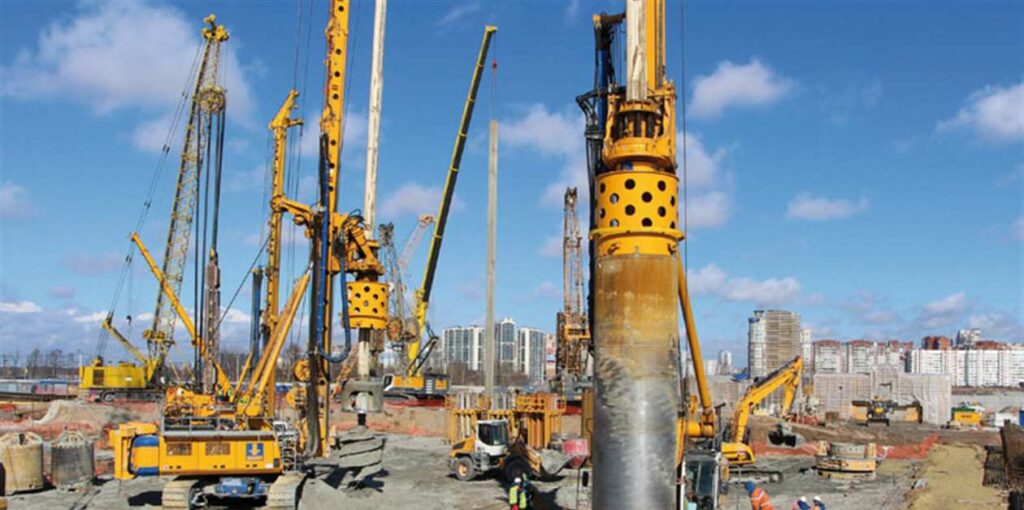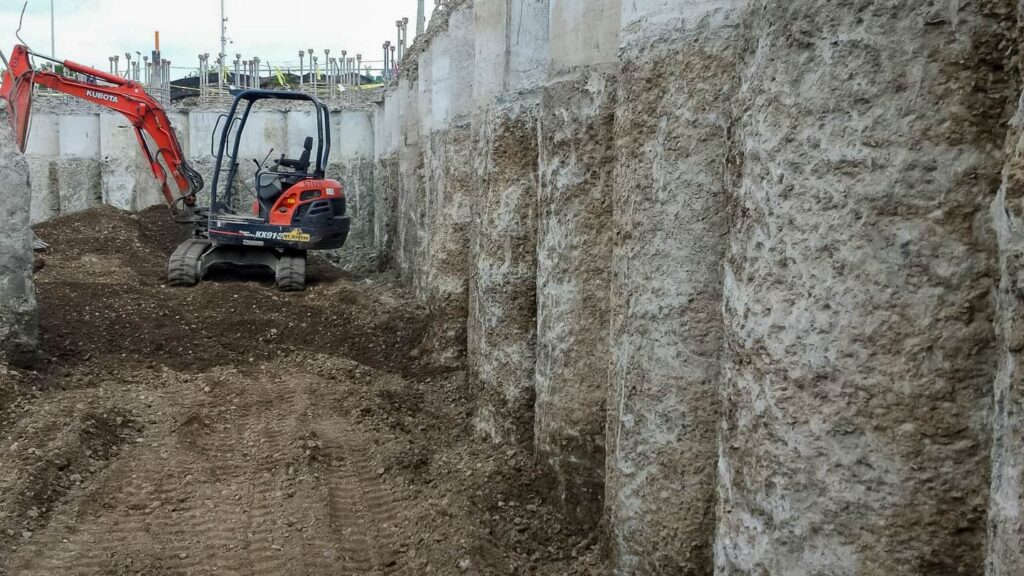Secant pile retaining walls hold great significance in civil engineering and construction. These walls are constructed by overlapping individual piles, typically reinforced concrete, to form a continuous structural wall.
The primary purpose of a secant pile retaining wall is to provide stability and support in areas with challenging soil conditions, such as soft or loose ground, high water tables, or when adjacent structures need to be protected.
The interlocking nature of the secant piles creates a watertight barrier, preventing soil and water infiltration and enabling deep excavations without compromising the surrounding environment.
The versatility and effectiveness of secant pile walls make them popular for various applications, including underground structures, basements, bridges, and deep foundations.
Advantages of Having Secant Pile Retaining Walls
Secant pile retaining walls offer several benefits in construction and civil engineering projects:
Versatility:
Secant pile walls can be designed and constructed to accommodate various site conditions, including soil types, water levels, and structural requirements. This flexibility allows for customised solutions that meet specific project needs.
Structural Stability:
The interlocking nature of the secant piles creates a strong and stable wall system capable of withstanding lateral soil pressure, surcharges, and other external loads. This stability is crucial for supporting deep excavations and protecting adjacent structures.
Water tightness:
The overlapping arrangement of secant piles forms an impenetrable barrier, preventing groundwater seepage into the excavated area. This feature is especially beneficial in projects where dewatering is challenging or costly.
Reduced Environmental Impact:
Secant pile walls minimise the disturbance to the surrounding environment compared to other excavation support methods. They help preserve the natural landscape and reduce soil erosion by eliminating the need for extensive sheeting or shoring.
Cost-Effective:
Secant pile retaining walls can be cost-effective for deep excavations and challenging soil conditions. Their efficient construction reduced the need for dewatering, and the potential to reuse excavated materials can result in overall project cost savings.
Longevity and Durability:
Secant piles are typically made of reinforced concrete, providing excellent durability and resistance to corrosion. This ensures the retaining wall’s long-term stability and structural integrity, reducing the need for future maintenance and repairs.
Aesthetics:
Secant pile walls can be finished with architectural treatments or cladding materials to enhance their appearance and seamlessly integrate them into the surrounding environment. This allows for both functional and visually appealing retaining wall solutions.
Some Cons

While secant pile retaining walls offer numerous benefits, it is essential to consider some potential limitations and challenges associated with their use:
Construction Complexity:
Secant pile walls can be complex and require specialised piling equipment rental and professional expertise. The overlapping of individual piles necessitates precise drilling and alignment, making it a time-consuming and labour-intensive. This complexity can lead to higher construction costs and longer project schedules.
Limited Excavation Depth:
The depth of excavation that can be achieved with secant pile walls may be limited compared to other retaining wall systems.
The diameter and length of the piles, as well as the soil conditions, can influence the maximum achievable depth. In cases where extremely deep excavations are required, alternative methods may be considered.
Potential for Pile Defects:
The quality and integrity of the individual piles are crucial for the overall performance of the secant pile wall.
Any defects or imperfections in the construction of the piles, such as concrete cracking or inadequate reinforcement, can compromise the strength and stability of the wall. Strict quality control measures must be implemented during construction to minimise these risks.
Excavation and Disposal of Spoils:
A significant amount of spoil material is generated during the construction of secant pile walls. Proper management and disposal of this excavated material can present logistical challenges, especially in urban areas with limited space or environmental restrictions. The cost and environmental impact of spoils management should be considered in the project planning phase.
Maintenance and Repair:
While secant pile walls are designed to be durable, occasional maintenance and repairs may be necessary over their lifespan. Factors such as ground movement, settlement, or unforeseen structural issues may require remedial measures to ensure the ongoing stability and functionality of the retaining wall.
Visual Appearance:
While secant pile walls can be aesthetically enhanced, their appearance may still be perceived as practical or industrial.
In specific contexts, such as residential or obvious areas, the visual impact of secant pile walls may need to be carefully considered and mitigated through additional architectural treatments or landscaping. It is essential to assess and address these limitations during the design and construction phases to ensure the successful implementation of secant pile retaining walls and mitigate potential risks.
You may also like
-
Automatic Fruit Wine Bottling Line for Small Wineries: A Complete Guide
-
How Does Plywood HSN Code Decide the GST Rate for Traders and Manufacturers?
-
POS Terminal Type: Which Is Best for Your Business?
-
How to Choose Fixed and Portable Gas Monitors for Industrial Gas Detection?
-
Simplifying Trademark Registration in Hong Kong: What Businesses Need to Know

